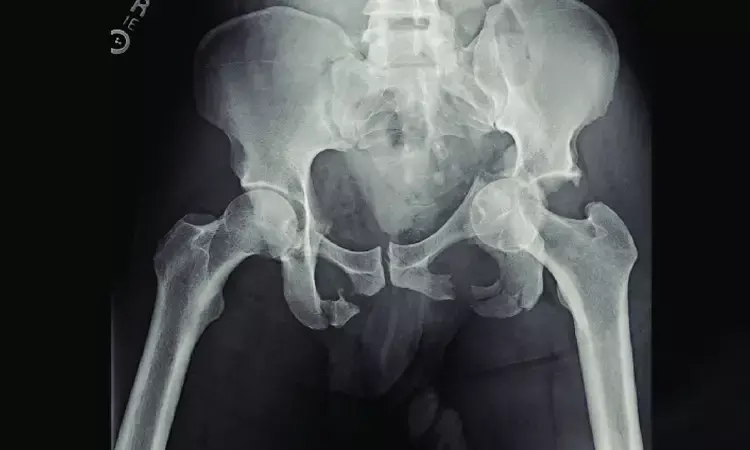- Home
- Medical news & Guidelines
- Anesthesiology
- Cardiology and CTVS
- Critical Care
- Dentistry
- Dermatology
- Diabetes and Endocrinology
- ENT
- Gastroenterology
- Medicine
- Nephrology
- Neurology
- Obstretics-Gynaecology
- Oncology
- Ophthalmology
- Orthopaedics
- Pediatrics-Neonatology
- Psychiatry
- Pulmonology
- Radiology
- Surgery
- Urology
- Laboratory Medicine
- Diet
- Nursing
- Paramedical
- Physiotherapy
- Health news
- Fact Check
- Bone Health Fact Check
- Brain Health Fact Check
- Cancer Related Fact Check
- Child Care Fact Check
- Dental and oral health fact check
- Diabetes and metabolic health fact check
- Diet and Nutrition Fact Check
- Eye and ENT Care Fact Check
- Fitness fact check
- Gut health fact check
- Heart health fact check
- Kidney health fact check
- Medical education fact check
- Men's health fact check
- Respiratory fact check
- Skin and hair care fact check
- Vaccine and Immunization fact check
- Women's health fact check
- AYUSH
- State News
- Andaman and Nicobar Islands
- Andhra Pradesh
- Arunachal Pradesh
- Assam
- Bihar
- Chandigarh
- Chattisgarh
- Dadra and Nagar Haveli
- Daman and Diu
- Delhi
- Goa
- Gujarat
- Haryana
- Himachal Pradesh
- Jammu & Kashmir
- Jharkhand
- Karnataka
- Kerala
- Ladakh
- Lakshadweep
- Madhya Pradesh
- Maharashtra
- Manipur
- Meghalaya
- Mizoram
- Nagaland
- Odisha
- Puducherry
- Punjab
- Rajasthan
- Sikkim
- Tamil Nadu
- Telangana
- Tripura
- Uttar Pradesh
- Uttrakhand
- West Bengal
- Medical Education
- Industry
Treatment modalities of Hemorrhage control and mortality risk in unstable pelvic fractures

The mortality rate for patients with pelvic fractures has been studied extensively in the trauma literature, and most studies have placed it at 10%. Patients with pelvic fracture who required at least 4 units of blood transfusion and 1 significant hemorrhage control intervention were included in a recently published research that looked at their long-term prognosis.
Preperitoneal pelvic packing is associated with a greater risk of complications and a high overall mortality rate (36%), whereas angioembolization (AE) is associated with a decreased mortality rate (PP).
Patients with significant injuries to parts of the body other than the pelvis were also included in the study.
The authors performed a sensitivity analysis, excluding the subset of patients with an Abbreviated Injury Severity score of 2 or greater for head or chest, and confirmed their findings. The inclusion of these patients with a median Injury Severity Score of 24 may explain the high mortality rate and the median of 9 units of blood transfused. An independent risk of death has been linked to pelvic fractures in the context of other serious injuries, as shown by previous research. Perhaps most importantly, the authors show that there is substantial variation in the management of these critically ill patients across the United States, particularly in the choice and combination of interventions used, such as aortic endovascular balloon angioplasty (AE), preperitoneal PP, and resuscitative endovascular balloon angioplasty (REBOA).
This population-based research may have residual confounding, and patients who receive preperitoneal PP are physiologically different from those who can wait for the interventional radiology team, but the obvious issue from these findings is: what can we do to better rescue these patients and lower their high fatality rate?
The most noteworthy discovery of this research is the wide range of hospital management approaches. This variant warrants more investigation. Literature demonstrates that variance in procedures of care typically reflects variation in the quality of care offered, even if some variation is always necessary to provide patient-centered, tailored care.
MBBS, MD (Anaesthesiology), FNB (Cardiac Anaesthesiology)
Dr Monish Raut is a practicing Cardiac Anesthesiologist. He completed his MBBS at Government Medical College, Nagpur, and pursued his MD in Anesthesiology at BJ Medical College, Pune. Further specializing in Cardiac Anesthesiology, Dr Raut earned his FNB in Cardiac Anesthesiology from Sir Ganga Ram Hospital, Delhi.
Dr Kamal Kant Kohli-MBBS, DTCD- a chest specialist with more than 30 years of practice and a flair for writing clinical articles, Dr Kamal Kant Kohli joined Medical Dialogues as a Chief Editor of Medical News. Besides writing articles, as an editor, he proofreads and verifies all the medical content published on Medical Dialogues including those coming from journals, studies,medical conferences,guidelines etc. Email: drkohli@medicaldialogues.in. Contact no. 011-43720751


